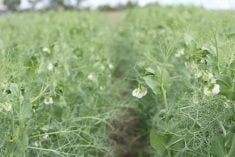Today’s world economy looks a lot like the economy in the early-to-mid 1970s, and that’s great for crop and meat prices.
Those were years of spectacular profits for prairie farmers, just like in these last few years. The prices of agricultural commodities traded on a much higher plateau.
But although prices are higher generally, they are also volatile – in the way nitroglycerine is volatile – so farmers can’t forget about hedging margins.
Those are some of the conclusions I gleaned from the GrainWorld conference in Winnipeg last week, reaffirming my views.
Read Also

Prairies have variable soil moisture conditions
The dry weather in the west was welcome for preserving grain quality and advancing harvest, but it has resulted in very dry soil moisture conditions.
I’m a long-time believer in the “long-term commodity bull market” theory and also in my personal “I’m reliving the 1970s” theory.
But the spectre of deeper, deflationary economic problems lies under the surface, and nothing I heard from all the analysts at GrainWorld dissuaded me from thinking that a “double dip” recession or worse is still a real possibility.
Hence, even more reason for farmers to protect profits.
As George W. Bush noted so memorably during the 2008 meltdown: “This sucker could go down.”
I heard an economist from a big bank cautiously call for “sustained though gradual growth.”
But he also suggested that geopolitical dangers to the U.S. economy and inflationary/deflationary dangers present in Asia could inflame and douse commodity prices.
I heard meat market analysts finding justification for higher retail meat prices, but also a significant danger of demand slumping on consumer rejection.
I heard a vegetable oil market specialist saying China could provoke a powerful rally in canola prices if its stocks are lower than it claims. But he also noted that present prices seem “rich” compared to the fundamentals and reflect dangers that may not come true.
Overall, the outlook for agricultural commodities is bullish, virtually every analyst at GrainWorld said.
But that was also the case back in 2007-08 and look at what happened then.
My “reliving the 1970s” theory relies not just upon my having grown up then, but also on market history, which has shown a remarkably similar pattern.
Crop prices that had been in a stable range for most of two decades exploded into a series of peaks with a much higher plateau.
Farmers remember the 1970s mostly as a time of high prices, but the volatility then was masked by the much greater proportion of prairie crops marketed through Canadian Wheat Board pools, which evened out prices and masked the wild price swings in many years.
Canola had just been invented in the early 1970s and few pulses were grown.
But board grains are now a minority of farmers’ marketable assets, and options exist within the board system to price outside the pools. This exposes farmers to the market volatility.
That’s either good or bad depending on how well a farmer markets his crops, or perhaps how much luck he has.
But farmers need to keep that heightened level of exposure in mind.
In recent weeks, canola November futures rose to more than $600 per tonne, slumped below $540, and climbed back to $580. Such volatility is typical in these types of periods.
It’s nice to view this period as one of continuing high crop and livestock prices, just like folk memory of the 1970s.
But it’s essential to remember that super-high prices don’t last long, and bull markets in commodities contain as many slumps as peaks.
That’s what really happened in the 1970s.















